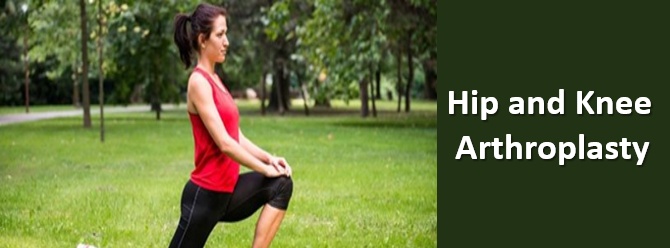Arthroplasty is an orthopedic surgical procedure where the articulate surface of a musculoskeletal joint is replaced, remodeled or realigned. Surgical site infection(SSI) is one of the common complications following hip or knee replacement, which comes as a devastating situation for the patients and their caretakers.
Treatment for these infections often requires one or more of the following:
• A second operation to remove the hardware and insert a spacer device impregnated with antibiotics
• Prolonged systematic antibiotic methods, along with possible side effects of these medicines
• Substantial pain and impaired mobility that may require reliance on a wheelchair and/or walker
• A third operation four to six weeks after completion of antibiotics for re-implantation of the joint, followed by additional physical therapy and recuperation; and
• Considerable out-of-pocket expenses for patients, time away from work, and reliance on family members and caregivers.
Preventing Joint Replacement Infection:
Advances in surgical technique, sterile protocol, and operative procedures have been instrumental in minimizing Surgical site infection. Different prevention measures are followed which are discussed below under preoperative and intraoperative measures.
Preoperative measures:
1. Skin Preparation: Preoperative skin preparation methods include standard washing and rinsing, antiseptic soaps, and iodine-based or chlorhexidine gluconate-based antiseptic showers or skin cloths.
2. Patient Optimization: Poor nutritional status may compromise immune function, potentially resulting in delayed healing, increased risk of infection, and, ultimately, negative postoperative outcomes. So, proper nutrition and avoidance from smoking must be observed.
Intraoperative measures:
1. Cutaneous Preparation: The solutions used in during the operation for skin preparation are similar to those used preoperatively: povidone-iodine, alcohol, and chlorhexidine.
2. Hair Removal: This is a common practice during major surgeries to maintain hygiene.
3. Ventilation Flow: Laminar-airflow systems are widely used to prevent SSI. Horizontal-flow and vertical-flow ventilation provides and maintains ultra-clean air in the operating room.
4. Gloves and body suits for surgeons: These reduce incidents of infection from bacteria laden particles.
5. Systemic Antibiotic Prophylaxis: Perioperative antibiotic use is vital in minimizing the risk of infection after arthroplasty.
Although SSI continues to occur in patients, it is always favorable to consult a good and experienced orthopedic specialist for joint replacement surgery.
Reach out to us for answers to your questions about Knee & joint replacement. Dr Chirag Patel at Sunshine Global Hospital Surat, Call +917574887777.





